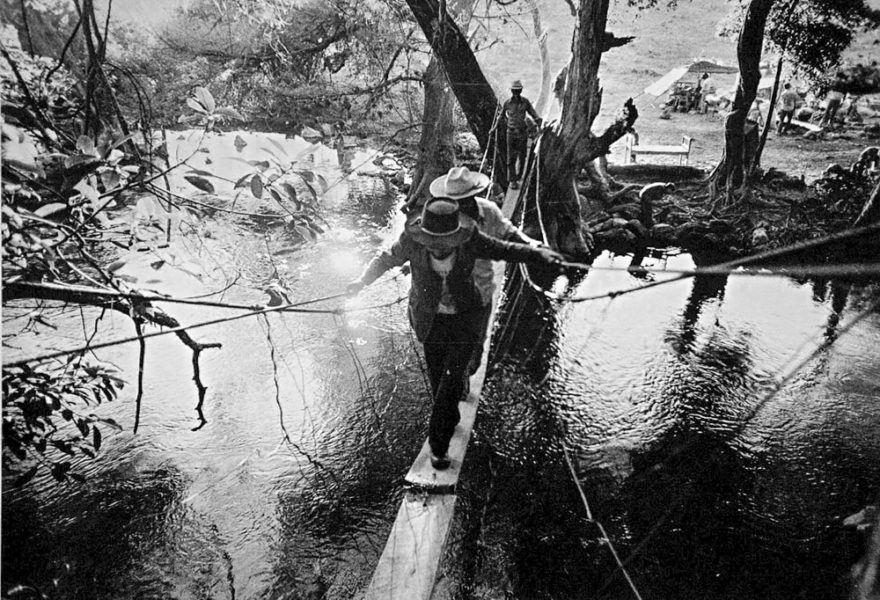Guatemalan refugees in Mexico, 1981
The region divided by a border
“As Central American problems brewed again, the bordering character made itself present, in all its dimensions, of all the municipalities that had accustomed to a dividing line with little impact on the daily activities of its inhabitants. Until that moment political divisions hadn’t been able to break the continuous landscape traced by centuries of shared history and in which the linkage included blood relative relations and between its inhabitants up to intertwined commercial and productive webs, passing through the cultural unity of the region. Being long term constructions their hard core was not going to come undone in a day, but the efforts to define exact outlines that established where Mexico began and ended and, above all, the olive green color that began to permeate a landscape in which, up to that point, military took a side role.” (Guillén, 2003, 137)
Cold War in Central America
“The discrepancies between discourse and reality lead us to believe that the measures taken to incise upon the latter where strongly influence by the American vision of a bipolar world, in which the enemy’s ascent was to be stopped no matter what. According to Domino Theory, it was inadmissible for our Northern neighbors that the South would switch blocs and, consequently, they declared a low intensity war (Bermúdez, 1987). But even more severe would be that in their course, they would drag a country which the United States adjoined, there the pressure for Mexico to stand firm in their posture and adopt strategies engrossed in the National Security doctrine that they themselves had built (Mussali, 2000; Suárez, 1977). They acted from the assumption that national resources (specially recently discovered petroleum mantles) were at risk and had to be defended and, at the same time, where trying to stop the influx of infiltrated guerrilla fighters –according to this vision– in the groups that requested refuge (Aguayo 1990). To that end numerous military contingents were called up”. (Guillén, 2003, 138)
Victoria 82
“The first military operations of Victoria 82 [a plan designed to eliminate the Guatemalan guerrilla] were conducted in the borderlands of Mexico, a country that tolerated training and resting Guatemalan guerrilla camps. But just as Mexico turned a blind eye towards the presence of some insurgents, they also didn’t flinch too much against the incursions of the Guatemalan army into their territory. In any case, the rebels ended up being an insignificant number when compared to the avalanche of refugees running from the bombings and tracking operations from the government. Up to 10,000 Guatemalans looked for protection inside Mexico’s borders. In the Guatemalan grouping, around a million people ended up being displaced and turning into refugees because of the military actions. It was a foreseen cost by the army in their eagerness to deprive water from the fish. In September 1982 the Secretary of Defense Félix Galván deemed that strengthening the country’s borders was not necessary, as the contributing personnel was ‘adequate.’ Days after Galván had expressed his camness, a group of 140 Guatemalan kaibiles commandoes entered a refugee camp and kidnapped ten of their countrymen”. (Shor. 1989, 53)



